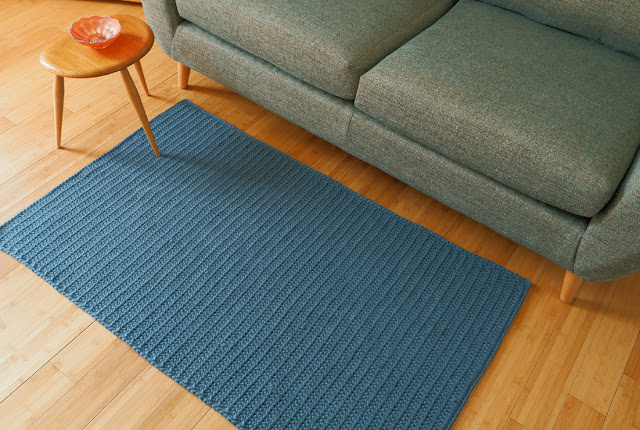Come with me on a voyage into the past, to a time of full employment when industry hummed across Britain from coast to coast. Come with me to the hey day of the British yarn industry.
I've talked to you before about overcoming crochet fear. So imagine this, someone gifts you some yarn which is at least 60 years old. What do you do? I can't say exactly how old Patons and Baldwins Gnome Rug & Embroidery yarn is. I can say Patons and Baldwins has not existed as a company since 1961 when it merged with J.P.Coats.
I had been given 4 bags of yarn, each bag contained 4 skeins, each skein was made up of four 1oz skein so all in all I had 64oz of yarn.I wanted to make a rug, but I didn't exactly know how much I had and once used it there would be no more, ever!
I could sort of guess the approximate yardage and I knew there were about 6 wraps per inch. I guessed that this yarn was bulky weight with about 50metres per 100grams. But there are no existing crochet patterns for this yarn. It was a daunting prospect!
So it sat around in its brown paper bags while I tried not to think about it! The sheep that made this wool died a long time ago. The shepherds that sheared those sheep have long since retired. The factory that spun this yarn is closed and gone. I am not even the yarn's first owner. This yarn really needed to escape it's confinement.The brief for this unknown quantity of yarn was easy, I wanted a washable rug that would withstand my two dogs. Dogs and crochet do not go well together, the stitches need to be short so that they don't get caught in claws. Off to the stitch dictionaries we go to swatch.
In the end I went with Herringbone Stitch, also known in days of yore as Counterpane stitch. (For those joining us from outside Britain a counterpane is an old fashioned name for a bedspread!) I love this stitch and I have to admit to using it whenever possible. It almost has a woven quality, hence the name I suppose! I also used the smallest size of Herringbone stitch. Having made a swatch I could then weigh it and count the stitches. This way I knew roughly how many stitches I could make with the 64oz or 1814grams of yarn. I could then estimate the size of rug possible. I went with an oblong as the easiest shape to make with a limited quantity of yarn.
The great thing about working with wool is that ends can simply be felted together so that I only had two ends to sew in altogether. I worked a simple double crochet (Sc-US) border.
I used the short Herringbone stitches, they are really a Double crochet sitting on top of slip stitches (Sc-US). This enabled me to put one Double crochet stitch into the edge of each Herringbone row and an extra stitch in each corner.The dogs have given it their full seal of approval. Which reminds me! This rug would be fine if it were on a carpet but as I will be using it on a hard floor it needs something underneath it to stop it from slipping. You can get all sorts of mats to go under rugs but these are usually made of some type of plastic so I decided to try something else, Latex. I tried using Pebeo Latex for mould making. I used one of those rubber brushes just because I had one but I could equally just have used the end of a pen.
The latex dries really quickly so you have to regularly clean your 'brush'. It's important to place small dabs of latex onto individual stitches so that it doesn't get pulled off when the fabric stretches. You also need to apply it outside to avoid the fumes. It is touch dry very quickly so that the rug can be brought in safely and allowed to finish drying overnight. It dries clear. My rug can now be safely washed and remains non slip.
Now I am wondering why it took me so long to liberate this yarn. Is there something in your stash that really needs to see the light of day?














